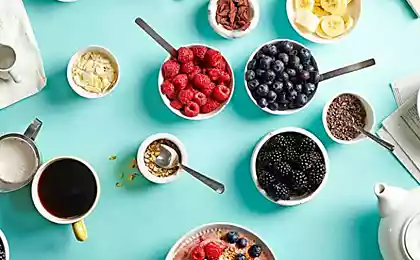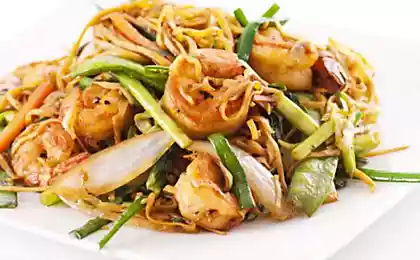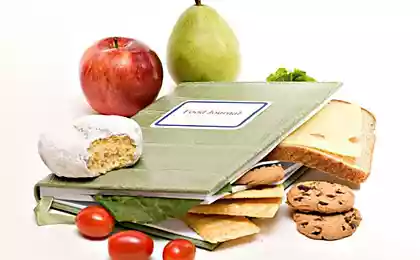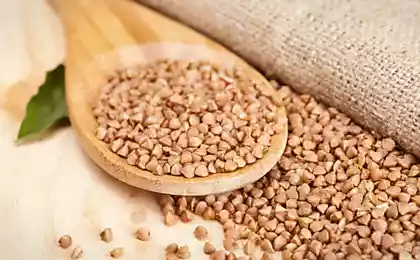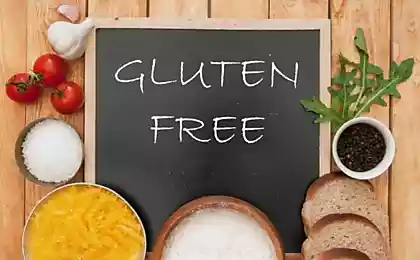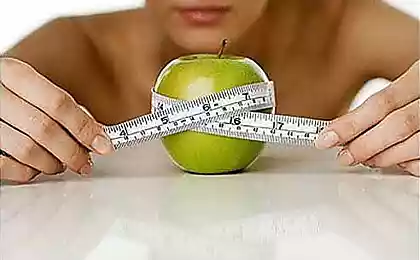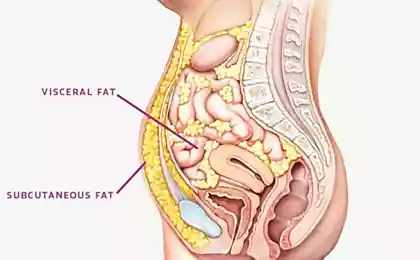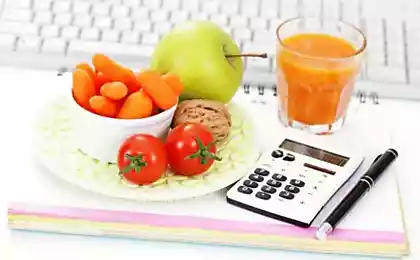352
We lose weight wisely
Today we will share with you one priceless secret – how simple and easy it is to count calories in what you eat. After all, knowing the calorie content of our own dishes, we have every right not to deny ourselves anything!
Let's get straight to practice.
Summary of recommendations
In order to successfully and correctly count calories in borscht, soups, casseroles and other dishes, you will need the following: kitchen scales, calorie tables, calculator, notebook and pen.
Libra It is best to choose electronic. This way you will know the exact weight. Before buying scales it is easy to check: take a small object (or several items) whose weight you know, and put it several times on the scale. Reset the scales and check again. If the figure does not change, the scales do not lie. Many manufacturers allow an error of ± 5 grams. Tables of measures and weights to determine the weight of products are not assistants here: the dish after cooking will need to be weighed to calculate its total calorie content, and then one of your portions.
Libra is best to choose electronic
Calorie table collection You can find it in any bookstore and it will always be at your fingertips. The calorie content of the product is also indicated on the packaging. In different tables, the figures may differ slightly. Choose one table for yourself and use it only.
All the kitchen utensils It is advisable to weigh in advance, so that later it is easy to deduct the weight of dishes or plates.
In cooking, it is important to remember: calorie content - 0 (zero) calories. But water gives weight and thus changes the total calorie content of the dish.
The more water you add, the more weight and fewer calories there are in 100 grams of a dish you counted once. no need to countunless its composition changes. Just write down in your notebook the number of ingredients you need.
And most importantly, formula to calculate the calorie content in 100 grams of the finished dish:
A grams = In calories
100 grams = X kcal
How to understand the symbols in this formula?
• A (grams) - the total weight of the finished dish in grams;
• B (kcal) - the total calorie content of products in the finished dish.
How do you use this formula?
Diagonally multiply two digits by each other and divide by the number that is diagonally with X:
B x 100: A The number of calories per 100 g of cooked dish.
Is the formula not very clear? Let’s take a closer look at how to apply it in practice.
Simple dishes: porridge Let's start with a simple dish and calculate the calorie content of ordinary rice porridge.
100 grams of rice porridge contains 110 calories
Ingredient:
Rice - 300 g
• Water.
• salt
1. 100 grams of dry rice contains 330 kcal.
2. For our porridge, we took 300 g of cereals: 330 kcal × 3 = 990 calories.
3. The entire amount of cooked rice porridge will have a calorie content 990 caloriesOther than water and salt, which we already know have no calories, we didn’t add anything else.
4. From 300 g of dry rice, about 900 g of finished porridge is obtained..
5. We calculate the calorie content of rice porridge in 100 grams:
900g rice porridge = 990 calories
100g rice porridge = H-cal
990 × 100: 900 = 110 kcal (990 multiplied by 100 and divided by 900)
So, our result: 100 grams of rice porridge contains 110 calories.
According to a similar scheme, we consider the calorie content of boiled pasta, beans, lentils. Before cooking, we weigh dry pasta, consider the caloric content of dry weight. Boil pasta, drain water and weigh ready-made pasta: the weight will be greater, as pasta absorbed water. Then we calculate the calorie content in 100 g.
Difficult dishes: mashed soup and apple samboo
The calorie content of a multicomponent dish is not much more difficult to calculate than the calorie content of simple porridge. Let's make a hearty meal. pumpkin-soup.
100 g of pumpkin soup-pure contains 64 kcal For your convenience, all data are given in the table.
Product
Product weight
Calorie in 100 grams
Calorie weight of the product by prescription
Milk 3.5%
1 L (1000 ml)
61 calories
610 calories
Potatoes
700
80 calories
560 calories
Pumpkin
700
25 calories
175 calories
Onions
150
41 calories
61.5 calories
Carrots
100g
37 calories
37 calories
Butter cream 82.5%
25g
748 calories
187 calories
salt
tastefully
0 calories
0 calories
Total:
2675
1630.5 calories
1. The total weight of products that are needed to make a pumpkin soup - 2675.
2. Total calorie products - 1630.5 calories.
3. In deep soteinika roast onions in butter, then add carrots, potatoes and pumpkin sliced in small pieces, pour milk, add salt. Bring to a boil and extinguish on a very slow heat for 30-40 minutes. After that, vegetables together with milk are crushed with a blender in puree.
4. The weight of the finished dish is 2562 g and contains all the same 1630.5 kcal (reminder that water evaporates, not calories).
5. According to the formula, calculate the calorie content of pumpkin soup in 100 g:
In 2562 g of soup = 1630.5 kcal
In 100 grams of soup = X kcal
1630.5 × 100: 2562 = 63.6 kcal (round to 64 kcal)
In 100 g of pumpkin soup puree contains 64 kcal.
And let's not forget the easy dessert. We're on the menu today. apple-samboo It has an amazing cinnamon flavor.
Product
Product weight
Calorie in 100 grams
Calorie weight of the product by prescription
Apples (peeled from seeds and peels)
500g
37 calories
185 calories
Water.
150 ml
0 calories
0 calories
sugar
60g
379 calories
227.4 calories
Egg white
2 pcs (70g)
45 calories
31.5 calories
gelatin
10g
355 calories
35.5 calories
Total:
790
479.4 calories
1. The total weight of the products we will need to make an apple dessert with cinnamon is 790.
2. The total calorie content of these products – 479.4 calories.
3. Let's make an apple samboo.
Sambuc is a gelled dessert based on whipped egg whites Apples are cut into quarters, peeled from the skin and seeds. We fold in a form, pour a couple of tablespoons of water on the bottom, cover with foil and bake in the oven at a temperature of 180 ° C for about 25-30 minutes (to softness). Ready apples are cooled, and in the meantime dissolve the gelatin as indicated on the package, and heated to 40-50 ° C, after which we also cool. Apples with a blender crushed in puree, add sugar and whipped with a corolla (nozzle) or mixer for about 1 minute. Then add egg whites to the apples, beat for at least 5 minutes: the mass will whiten and increase in volume. Then we infuse gelatin and beat for about 1 minute. The mass is poured into cremancas and put in the refrigerator for 3 hours. Before serving to the table, sprinkle cinnamon, decorate apple slices and a sprig of mint.
4. The weight of the finished dessert is about 675 g and contains 479.4 kcal.
5. Calorie content of apple sambuka in 100 g:
675g dessert = 479.4 kcal
100g dessert = X kcal
479.4 x 100: 675 = 71 kcal
100 g of apple sambuka contains 71 calories.
We fry patties, chops and meat in the crate
When calculating the calorie content of fried dishes, one key point should be considered: 20% The amount of oil you pour on the pan is absorbed into the product (cutlets, chops). However, if you fry potatoes, other vegetables, flour products, do not lose sight of the fact that These dishes absorb oil by almost 100%.. This is especially true of zucchini, eggplants, pancakes, pancakes: they absorb oil like a sponge and all the time require additional “feeding”. When you stew vegetables with added oil, all the oil ends up in your stew. In this case, you need to take into account all the fats used in cooking.
Eggplant absorbs butter like a sponge
I suggest a hearty lunch. fried chicken fillet under sour cream garlic sauce.
Product
Product weight
Calorie in 100 grams
Calorie weight of the product by prescription
Chicken breast fillet
500g
116 calories
580 calories
Lemon juice
50ml
16 calories
8 calories
Vegetable oil
100ml
900 kcal - 20%*
180 calories
Salt, pepper
tastefully
Total:
650
768 calories
*20% of the specified caloric content of butter, is 180 kcal, which are absorbed in chicken meat. The rest of the oil will remain in the pan.
1. We're gonna need to make fried chicken fillets. 650 food.
2. The total calorie content of these products is 768 calories.
3. Let's start cooking lunch. Cut the chicken fillet along into two parts and slightly beat. Solim, pepper, spray lemon juice and leave to marinate for 20-30 minutes. Then we roast on vegetable oil from both sides to the golden crust. Let's make some chicken fillet sauce. Ingredients to taste in the quantities you need: sour cream, garlic, greens, salt. Squeeze the garlic through the press, cut the greens finely, combine with sour cream, add salt and mix. Or grind all the ingredients with a submersible blender. The calorie content of sour cream sauce will equal the calorie content of your sour cream: greens and garlic are products with very low calorie content.
4. The weight of chicken fillets after cooking is about 400 g and contains all the same 768 calories.
5. Now calculate the weight of roasted chicken fillets in 100 g:
400g fried chicken = 768 kcal
100g fried chicken = X kcal
768 x 100: 400 = 192 kcal
In 100 g of fried chicken fillet, we have 192 kcal (excluding the calorie content of sour cream).
If you want to cook meat in clay, then the calorie content of meat and vegetable oil should be added to the calorie content of clay (flour, milk, egg).
How many calories are in broth and compote?
When cooking into broth, part of the calories passes from products: from fish - 15%, from meat - 20%, fruits - 30%, dumplings, mantas and hinkali - 20%. These numbers can fluctuate: it all depends on the time of preparation of products.
Calculate the calorie content of fish broth from salmon. Take a salmon steak weighing 300 g and 1 liter of water. Calorie salmon in 100 g = 142 kcal, in 300 g of this fish = 426 kcal (142 × 3).
426 kcal – 15% = 63.9 kcal (round to 64 kcal).
In 1 liter salmon broth 64 kcal. In 100 ml of broth only 6.4 kcal!
Boiled meat and vegetables
To calculate the calorie content of boiled (baked, steamed) meat or vegetables, weigh the product before cooking, boil (baking) and weigh after cooking.
We have dinner tonight. boiled beefA glass of kefir and a salad. The calorie content of kefir is written on the package, and the calorie content of meat and salad will be calculated by ourselves. With salad, everything is simple: add up the calorie content of all its components. Meat counting.
When cooking meat, about 20% of its calorie content goes into broth.
Ingredient:
• Beef spatula (meat without bone) - 1 kg
• salt
1. 100 g of beef spatula contains 208 kcal.
2. In 1 kg shoulder blades: 208 kcal × 10 = 2080 kcal.
3. After cooking, the weight of boiled meat is about 700 g: boiled meat has decreased in volume and weight.
4. When cooking meat, about 20% of its caloric content goes into broth, thus 2080 kcal - 20% = 416 kcal, that is how much boiled into broth from a piece of meat weighing 1 kg, and There are 1664 calories left in the meat..
5. Let’s calculate the calorie content of boiled beef in 100 g:
700 g boiled meat = 1664 kcal
100 g boiled meat = X kcal
1664 × 100: 700 = 237.7 kcal
In 100 grams of boiled beef spatula 237.7 kcal (round up to 238 kcal).
And in conclusion, I want to give you useful advice: the calorie content of fruit compote (without sugar), broths, coffee and tea (also without sugar), garlic, greens, many dry spices is so small that you should not focus on this. You will not be able to drink so much broth in a day to catastrophically overtake the norm of your calories. And, especially, you are unlikely to master so much garlic. But if you cook with the use of fats, then you can reduce the caloric content of the first or second dishes as follows: after cooking, remove a fatty film from the surface of the dish with a spoon.
Calorie counting may seem complicated at first glance. The second or third time you will do better, and after a while you will do it automatically.
Spring is the most beautiful time of the year when nature awakens. I sincerely wish you to feel a fresh mood and cheerfully walk to the intended goal.
Source: domashniy.ru/

